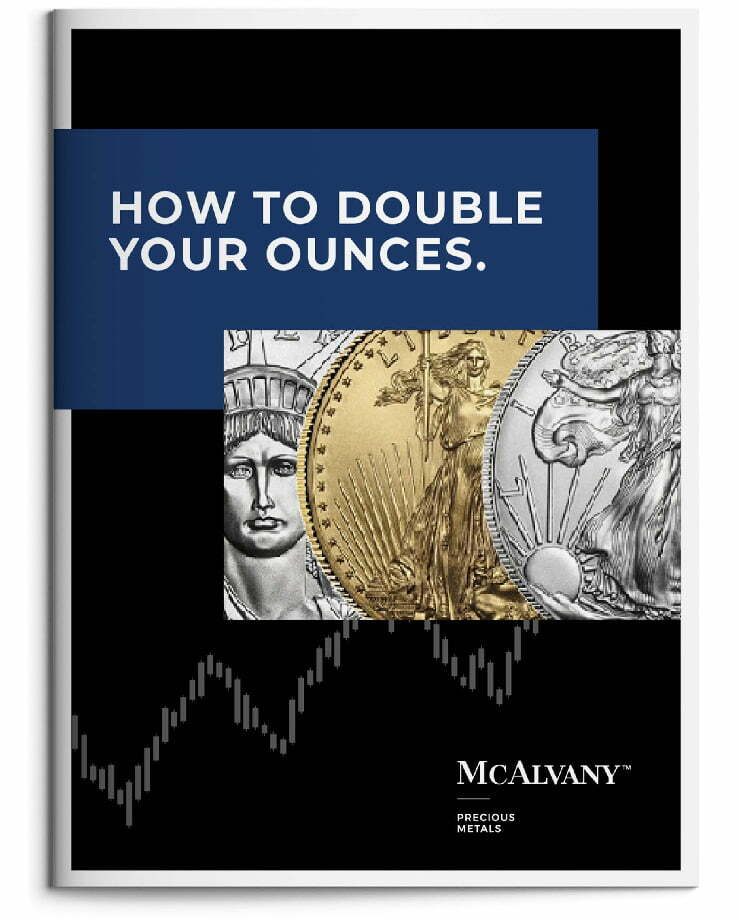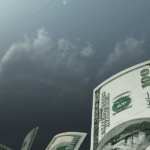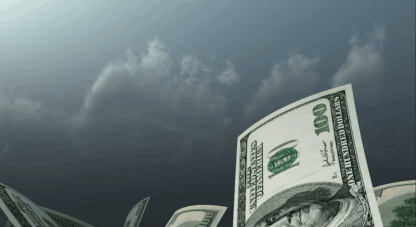Many are the movies where someone in the plot can’t leave a dangerous situation in a building via a door or window. Instead, they have to crawl out through the ventilation shaft. Never mind that most modern ventilation shafts won’t support the weight of a person; suspend disbelief long enough for this point to be made: America’s in a room that’s on fire, and the doors and windows are blocked.
America’s debt and unfunded liabilities are unsustainable at present levels, and are growing fast. Defaulting on these obligations is unthinkable. It would destroy all confidence in the federal government and fundamentally affect the peaceful governability of the country. Meeting the obligations by hyperinflating the currency is also fraught with immensely negative side effects—destroying people’s savings, for one (it does seem that Trump is pursuing policies that will cause a significantly higher level of inflation, though it’s doubtful he is trying to achieve hyperinflation).
Taking away the liquidity that keeps a technically bankrupt but still functioning massive economy on its feet is also a hard road. It might address inflation, but payments on the debt will blow the budget out of the water. And rolling back the welfare state and out-of-control federal spending might be the “best” long-term answer, but the transition would likely impoverish and/or kill millions of Americans—to say nothing of the impossibility of getting politicians to be frugal in a democracy.
Those are the doors and windows of America’s burning room. So Trump is trying to climb out the ventilation shaft of massively stimulated economic growth. Some of his critics vehemently protest that ventilation shafts are not meant for human transit. They’re not rated for human weight. They’re not approved for egress. And those critics are right (tariffs can raise prices, American workers are typically more expensive than foreign workers, Trump’s economic stimulus is at least temporarily exacerbating the debt, his policies are alienating other nations, etc.). Does that make Trump wrong?
Whatever your answer to that question, it’s wise to recognize that the room is on fire and the exits are blocked. There is, however, a safe room you can go to. It’s made of gold, which is where the allegory breaks down. Gold doesn’t always hold its shape in fire, but it protects its holders exceptionally well in economic crises. The publications below will keep you informed about the fire’s progress and the nation’s response, but they’ll also show you where the safe room is.
Key Takeaways:
- Gold is tattling on the economy
- This bubble is on borrowed time
- Looks like we’re off to the inflationary races
- Gold’s worldwide appeal
The McAlvany Weekly Commentary: Can Trump “Stack” The Federal Reserve?
David and Kevin dive into the high-stakes power play unfolding between President Trump and the Federal Reserve, discussing whether Trump can successfully “stack” the Fed to align with his economic agenda. With Lisa Cook’s position on the FOMC under scrutiny, the hosts explore the global implications of perceived Fed politicization, from inflation risks to a potential loss of credibility for the U.S. dollar and bond markets. David highlights gold and silver breaking historic highs as markets react to uncertainty, while Kevin notes the “tattletale” nature of gold, reflecting deeper concerns about monetary stability. The duo scrutinizes Trump’s push for lower interest rates, likening it to “playing a dangerous game,” with potential ripple effects including yield curve steepening and currency devaluation. They also touch on historical precedents, trade policy shifts, and the limits of loose monetary policy in today’s overvalued equity markets. Ultimately, they remind listeners of the importance of sound money and the need for a steady hand amid volatile times.
Credit Bubble Bulletin: The Law of Bubbles
Doug delves into the volatile world of global financial markets, highlighting a week where bond yields initially spiked to multi-decade highs before reversing sharply on dismal labor data. He points to the Fed’s anticipated rate cuts—up to 69 basis points by year-end—as a symptom of a broader monetary disorder fueling asset bubbles while doing little to curb inflationary pressures. Gold surged by 4% to a record $3,587, with silver and platinum following suit, underscoring the growing appeal of hard assets amid loose financial conditions and speculative excess. Doug critiques Treasury Secretary Scott Bessent’s calls for Fed reform, labeling them as disingenuous given the administration’s role in stoking speculative leverage and deepening economic imbalances. He connects these dynamics to geopolitical tensions, spotlighting China’s military parade with Xi, Putin, and Kim as a symbol of an emboldened anti-U.S. alliance. Meanwhile, Trump’s trade wars and escalating tariffs threaten global stability while creating fissures in traditional alliances. The author warns of a “super Bubble” on borrowed time, amplifying systemic risks even as markets revel in record highs. Against this backdrop of loose credit and geopolitical uncertainty, Doug emphasizes the inevitability of financial instability and the enduring relevance of the “law of bubbles”: if you find yourself in a bubble, stop inflating.
Hard Asset Insights: The Countdown to Cuts
Morgan Lewis delivers a thought-provoking analysis this week, focusing on the Fed’s growing dilemma and its implications for inflation, gold, and hard assets. With Goehring & Rozencwajg’s prescient call of a new “inflationary era” as a backdrop, Morgan highlights the Fed’s apparent pivot toward rate cuts despite inflation remaining above target. Labor market weakness, including dismal payroll revisions and rising unemployment, has provided cover for policymakers to prioritize economic stimulation over inflation control. As markets now anticipate three 25-basis-point cuts by year-end, gold’s historic 35% year-to-date surge—its best performance since 1979—underscores its role as the ultimate safe haven amid increasing fiscal and monetary compromise. The discussion extends to the broader investment landscape, with industrial policy and sovereign debt dynamics likely stoking inflation further. Notably, even cryptocurrency giant Tether is exploring investments in gold mining, signaling a shift from paper assets to tangible value. Weekly market highlights include gold and silver posting strong gains, while energy and equity markets remained mixed. Morgan concludes with a clear message: as inflation accelerates and economic uncertainty deepens, gold and hard assets are poised to shine brighter than ever. For investors, the time to act is now.
Golden Rule Radio: Metals Surge to New Highs
Miles and Rob break down an exciting week in the precious metals markets as gold surges to a record $3,564 and silver rallies 6.2% to $41.24, breaking out of months-long consolidation patterns. Miles highlights these breakouts as a clear signal of renewed momentum and buying interest, while Rob explores the broader implications of sovereign and institutional demand driving these moves. With over $1.5 billion flowing into gold-backed ETFs in a single day and foreign governments like China, India, and Saudi Arabia ramping up gold purchases while shedding U.S. Treasuries, the hosts emphasize a growing global skepticism toward U.S. debt. They also delve into the U.S. government’s increasing involvement in private markets, including equity stakes in strategic companies and discussions of a sovereign wealth fund, pointing to potential long-term shifts in economic policy. Amid these changes, Miles underscores gold’s global appeal, noting that its strength isn’t just a U.S. phenomenon but a worldwide trend as other currencies face mounting debt concerns. For investors, Rob cautions that waiting on pullbacks might mean missing the boat in what could become a fast-moving market. As always, the team emphasizes preparation and steady hands in navigating the shifting investment landscape.















